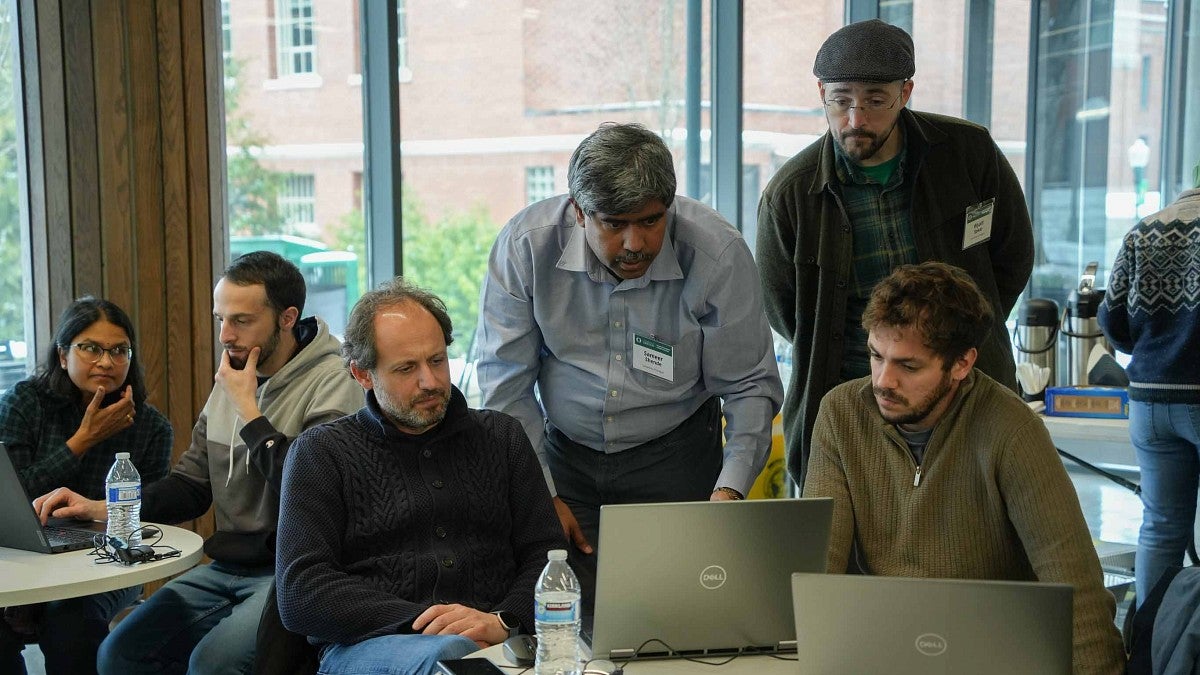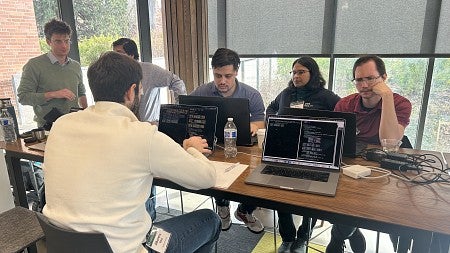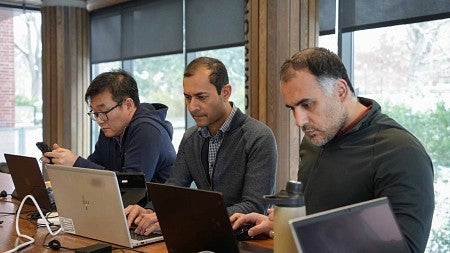
The School of Computer and Data Sciences (SCDS) served as a hub for the exchange of new ideas and technologies Feb. 11-13 as researchers and tech professionals from around the world gathered on campus for a hands-on programming workshop with Advanced Micro Devices (AMD), an industry leader in high-performance computing.
Research teams from universities such as MIT, Stanford, and more traveled to Eugene for the three-day hackathon, the first of its kind in North America. Participants gained access to the brand-new, cutting-edge MI300A accelerated processing unit, as well as guidance from 10 experts from AMD and the University of Oregon to assist them in taking their ongoing research projects to the next level.
Hackathon-style events like these take place regularly but are typically limited to government labs. This was the first time an open conference had taken place at a North American university, as well as the first time the MI300A had ever been publicly available.

“This is a great opportunity for the university and for researchers at UO to continue to build relationships with the wider community of researchers in high-performance computing and with one of the biggest industry partners in this area,” said Joseph McLaughlin, a computer science PhD student and one of the organizers of the event.
Fostering connections with industry partners is an ongoing focus for SCDS, and AMD is on the cutting edge of ensuring computers can keep up with the high demands of programs needed for research in a number of disciplines.
With the introduction of the MI300A, which uses an innovative new approach to parallel processing, “one GPU now is doing what a supercomputer could do 10 years ago,” according to AMD expert Bob Robey. The possibilities created by gaining access to such computational power are nearly endless.
“Computational science is a diverse field, and there are projects from computational fluid dynamics, climate science, AI and other fields, which require a lot of processing power. We have our software stack working efficiently on the AMD systems,” says UO Professor Sameer Shende, one of the event’s organizers and head of Performance Research Laboratory, OACISS, the research group behind Tuning and Analysis Utilities (TAU), a performance evaluation tool programmers can use to understand how their software is interacting with a piece of hardware.
Software tools and environments like those offered by TAU or Extreme Scale Scientific Software Stack (E4S), another UO-based research group, are critical for creating complicated programs to tackle some of the world’s biggest problems.

The conference was a major success for participants, AMD and the University of Oregon alike, says Hank Childs, interim executive director of SCDS. "All of the participants reported success, ranging from porting to the new hardware, learning how to instrument their code and find performance issues, and, in some cases, fixing major performance issues and having more efficient code," he says.
The AMD workshop marked another significant event in the world of high-performance computing centered around the UO School of Computer and Data Sciences.
“The University of Oregon is critical to moving toward the future of high-performance computing code development,” Robey says. “And it's not just one vendor, it's the whole community that's moving forward. The University of Oregon is a critical player in that whole movement.”
—By Evan Ney, College of Arts and Sciences
